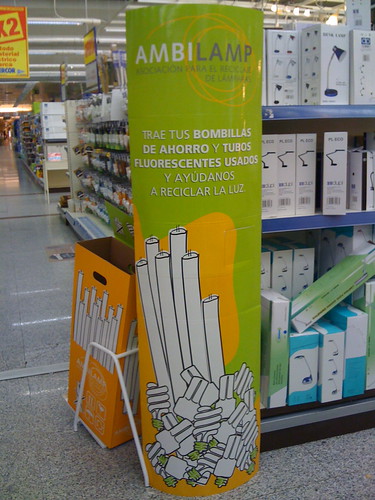Someone I know and respect made a bit of a boo boo last week and I called him on it. In response to the announcement of BP’s “Giant oil find” in the Gulf of Mexico, he Tweeted:
Giant oil reserver [sic] in the Gulf, most rushing to drill it except the US. Wouldn’t that be ready made jobs and revenue?
To which I replied:
Wouldn’t it be ready-made pollution (CO2)? Ethics of celebrating jobs & revenue based on planetary destruction?
People seem to be all too ready to forget about the fact that climate change doesn’t stop to consider whether there is a recession. It doesn’t say, “oh, there’s a down-turn and you want to pump a few extra million tonnes of CO2 into the atmosphere? No problem, you should have said, go right ahead”
At least in the case of the BP find, according to this Wall Street Journal analysis, recovery rates may be as low as 5-15% (150-450m barrels of oil) – still a lot of CO2 but significantly less oil than the headlines were suggesting.
e.on UK, is the energy company which owns the infamous Kingsnorth power station. Kingsnorth is one of the largest coal-fired power plants in the UK and alone is responsible for roughly 7.3m tonnes of CO2 being emitted into the atmosphere per annum. e.on UK has launched Talking Energy, a channel on YouTube to foster an online dialogue about energy.
However, as you would expect, the company stresses energy sources which will benefit e.on and its shareholders in the short-term, as opposed to trying to benefit the planet (and thus the company and its shareholders) in the long term. In the video above you see Jeremy Nicholson, lobbyist and Director of the Intensive Energy Users Group – “a single-issue lobby group which campaigns for secure industrial energy supplies at internationally competitive prices”. Jeremy throws out the old lie about the need for baseload power for the electricity grid as a reason to keep investing in carbon polluting energy sources.
The baseload argument is an old one and one which was given its severest kicking recently when the Jon Wellinghof, Chairman of the US Federal Energy Regulatory Commission said back in April that:
renewables like wind, solar and biomass will provide enough energy to meet baseload capacity and future energy demands. Nuclear and coal plants are too expensive, he added.
“I think baseload capacity is going to become an anachronism,” he said. “Baseload capacity really used to only mean in an economic dispatch, which you dispatch first, what would be the cheapest thing to do. Well, ultimately wind’s going to be the cheapest thing to do, so you’ll dispatch that first.”
Now if the chairman of the US Federal Energy Regulatory Commission believes that renewables can provide enough power to meet baseload and future energy demands, I’m going to take his word over e.on’s and their lobbyist’s.
e.on, some questions for you:
- Does CO2 cause climate change (and the consequent deaths of thousands of people annually, not to mention species extinctions, environmental destruction, etc.)?
- Do you care that your pollution is killing people and destroying the planet?
- When do you plan to stop killing people, destroying the environment and driving species to extinction (i.e. when do you plan to stop emitting CO2)?
Seriously people, the correct order is planet first, then people, then profit.
Related articles by Zemanta
- Meet Europe’s biggest carbon polluter (guardian.co.uk)
- Coal protesters board cargo ship (news.bbc.co.uk)
- BP Discovers ‘Giant’ Oil Field in Gulf of Mexico (nytimes.com)
- A triumph for legitimate protest (guardian.co.uk)







